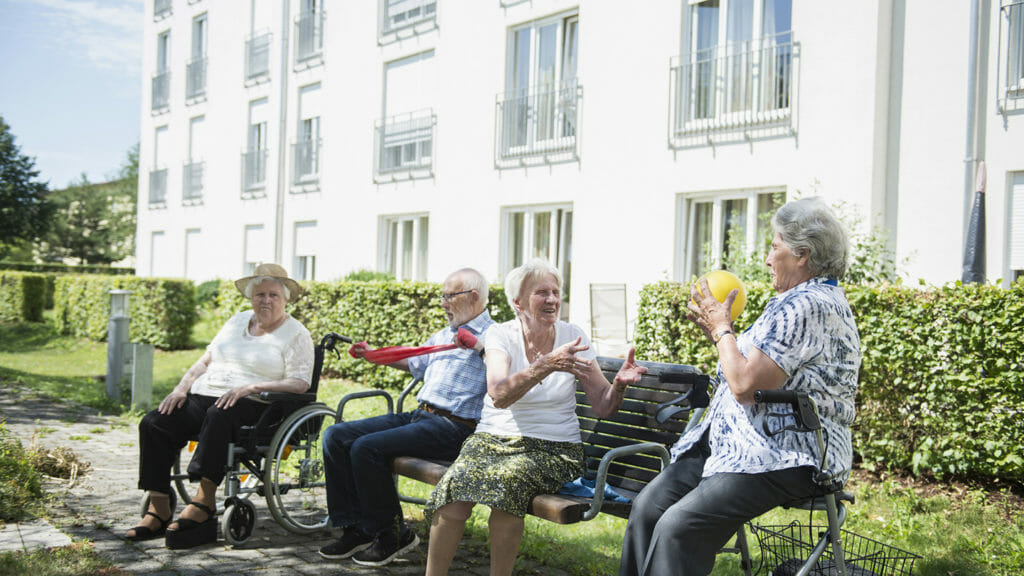
The AARP Public Policy Institute is spotlighting three state programs that it says proactively link community-based long-term services and supports beneficiaries to both housing and services. Two of these states have adjusted their assisted living care regulations to do so.
The report is part of the organization’s LTSS Choices initiative, which seeks ideas for “common-sense” programs with that goal and showcases models that are ready for widespread scaling or have potential for success.
Although most states and managed care plans help individuals find affordable housing during transitions from nursing homes to the community. But Massachusetts, New Jersey and Connecticut went a step further, finding a way to strengthen their LTSS support by designing subsidized housing platforms that address a lack of affordable, accessible housing and worker shortages, according to the authors.
Stretching resources
Subsidized housing creates economies of scale by clustering service delivery and “efficiently reaching concentrations of older adults using home- and community-based services,” they said. This helps to stretch limited workforce and funding resources while increasing care quality, to keep people in their communities, they added.
The authors noted that among other things, two states modified their assisted living regulations to “fit the realities” of existing physical property designs, current housing regulations and the potential volume of participating individuals on a property. “Some also added categories to their assisted living regulation to specifically include assisted living delivered in subsidized housing communities,” they said.
The Connecticut and New Jersey programs, for example, hire licensed assisted living services agencies to provide onsite services. In Connecticut, this includes residents in affordable senior housing communities (independent living), including the state’s Congregate Housing for the Elderly Program properties, administered by the federally funded Connecticut Home Care Program for the Elderly.
In New Jersey, assisted living program staff must deliver the same services available in licensed assisted living residences and must provide or arrange for those services.
Resident contribution
In both states, residents pay monthly rent and may receive a Housing and Urban Development subsidy that limits their out-of-pocket rent costs to 30% of their income. In addition, Connecticut residents who are eligible for a state-funded component are responsible for 9% of the cost of services.
Those plans reduced the number of aides needed to serve the same number of people, helping to alleviate an “exploding demand” for home care aides and existing aide shortages, according to the report. Onsite staff also provide more continuity of care, allowing them to spot concerns earlier such as potential health issues or accidents that may lead to emergency room visits, hospital stays and further decline, the authors said.
Massachusetts’ program, meanwhile, serves people living in state-funded public housing for older adults and people with disabilities. The state contracts with private, not-for-profit service providers at no cost to residents. The program is open to all residents who live in a property that operates the program.
Volume needs
The success of those programs may hinge in part on the volume of individuals needed to make them financially sustainable. In some cases, this may be limited by residents who are not eligible to receive assisted living services through Medicaid or who may be dispersed among multiple providers through a Medicaid waiver program.
“This can lead to providers discontinuing programs or being reluctant to start new ones,” the authors noted.
Although the state strategies do not produce new housing units, “they do offer a promising LTSS delivery approach that can provide more flexible and responsive supports to residents than the traditional one-to-one home care model,” the authors said.
Providing integrated, community-based care options for LTSS beneficiaries in affordable housing platforms “could boost the rationale for expanded public and private investment in new affordable housing stock,” they concluded.

